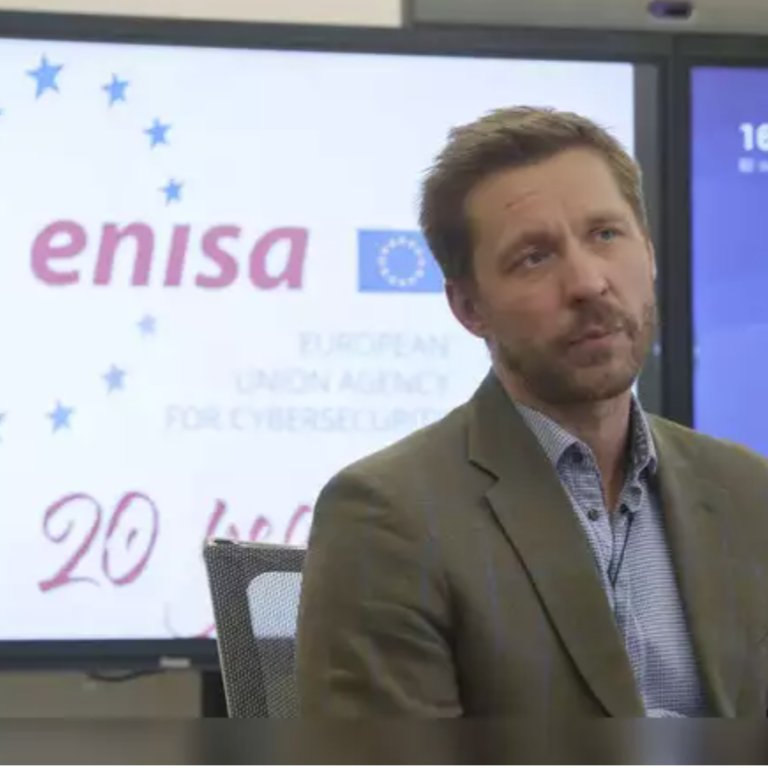INTRODUCTION
In the rapidly evolving landscape of the digital age, the term “cyber-attack” has become a ubiquitous phrase, encapsulating a myriad of threats and risks lurking in the depths of cyberspace. From sophisticated hacking operations targeting multinational corporations to ransomware attacks crippling critical infrastructure, cyber-attacks pose a significant threat to individuals, businesses, and nations worldwide. In this comprehensive guide, we will delve deep into the world of cyber-attacks, exploring their various forms, motivations, impacts, and most importantly, strategies for mitigation and response.
However, what precisely constitutes a cyber-attack, and what mechanisms drive their occurrence? Let’s explore this pervasive and ever-evolving phenomenon in greater detail.

In simplest form, a cyber-attack refers to any malicious activity perpetrated through digital means, aimed at compromising the confidentiality, integrity, or availability of computer systems, networks, or data. Unlike traditional physical attacks, which rely on tangible weapons or force, cyber-attacks operate in the ethereal realm of cyberspace, leveraging technology and digital tools to achieve nefarious objectives. The motivations behind cyber-attacks are diverse and can range from financial gain and espionage to activism, sabotage, or geopolitical interests.
THE LANDSCAPE OF CYBER ATTACKS
In recent years, the world has experienced a significant surge in cyber threats, presenting a formidable challenge for individuals, businesses, and governments worldwide. Cyber-attacks have evolved in both prevalence and sophistication, posing serious risks to global cybersecurity. This article delves into the factors fueling the escalation of cyber threats and discusses their far-reaching impact.
Factors Driving the Escalation of Cyber Threats
- The surge in connected devices and digital platforms has broadened cyber adversaries’ attack surface. This expansion offers more avenues for exploiting vulnerabilities and breaching systems. Moreover, Advanced Persistent Threats (APTs) have ushered in highly sophisticated tactics used by nation-state actors, criminal groups, and cyber spies, posing a significant risk to sensitive data and critical infrastructure.
- The surge in Ransomware-as-a-Service (RaaS) has democratized ransomware tools, empowering less skilled threat actors to execute attacks more effortlessly. Additionally, cyber attackers are now exploiting supply chain vulnerabilities by targeting third-party vendors, leading to widespread repercussions across multiple sectors.
- Social engineering techniques, such as phishing emails, social media scams, and pretexting, continue to be highly effective in tricking individuals and organizations into divulging sensitive information or unwittingly installing malware. These tactics exploit human psychology and trust, making them potent tools in the cyber attacker’s arsenal.
Impact on Global Cybersecurity
The growing prevalence and sophistication of cyber-attacks have significant implications for global cybersecurity. These attacks result in substantial economic costs, including financial losses, remediation expenses, and lost productivity. Moreover, cyber-attacks targeting critical infrastructure, government agencies, and defense systems pose serious national security risks, potentially compromising sensitive information and disrupting essential services. Governments worldwide are responding by implementing stricter cybersecurity regulations and increasing legal and regulatory scrutiny. Geopolitical tensions are also on the rise, fueled by cyber-attacks attributed to nation-state actors and state-sponsored groups.
FORMS ANND TECHNIQUES OF CYBER ATTACKS
Cyber-attacks come in various shapes and sizes, each employing distinct techniques and methodologies to exploit vulnerabilities and infiltrate target systems. Some common forms of cyber-attacks include:

- Malware Attacks: Malicious software, or malware, is a ubiquitous tool in the cyber attacker’s arsenal. This includes viruses, worms, Trojans, ransomware, spyware, and adware, each designed to infiltrate systems, steal data, or cause disruption.
- Phishing and Social Engineering: Phishing attacks involve deceptive emails, messages, or websites that trick users into divulging sensitive information, such as passwords, financial details, or personal data. Social engineering tactics exploit human psychology to manipulate individuals into performing actions that compromise security.
- Denial-of-Service (DoS) and Distributed Denial-of-Service (DDoS): DoS and DDoS attacks overwhelm target systems, servers, or networks with excessive traffic or requests, rendering them inaccessible to legitimate users. These attacks can disrupt services, cause financial losses, and damage reputations.
- Man-in-the-Middle (MitM) Attacks: MitM attacks intercept communication between two parties, allowing attackers to eavesdrop, modify, or impersonate participants without their knowledge. This can compromise the confidentiality and integrity of sensitive data.
- SQL Injection and Cross-Site Scripting (XSS): These attacks exploit vulnerabilities in web applications to manipulate SQL queries or inject malicious scripts, potentially gaining unauthorized access to databases, stealing information, or compromising user sessions.
- Ransomware: Ransomware attacks encrypt files or systems, effectively locking users out of their data until a ransom is paid. These attacks can have devastating consequences for individuals, businesses, and critical infrastructure.
- Zero-Day Exploits: Zero-day exploits target previously unknown vulnerabilities in software or systems, leveraging them before developers can patch or mitigate the issues. This allows attackers to exploit systems for malicious purposes.
- Insider Threats: Insider threats involve malicious actions or security breaches perpetrated by individuals within an organization, including employees, contractors, or business partners. These insiders may abuse their access privileges to steal data, sabotage systems, or facilitate external attacks.
MOTIVATIONS BEHIND CYBER ATTACKS
Understanding the motivations driving cyber attackers is essential for developing effective cybersecurity strategies. Common motivations include:
- Financial Gain: Many cyber-attacks are financially motivated, seeking to extort money through ransomware, steal financial information, or commit fraud.
- Espionage: Nation-state actors and cyber espionage groups conduct cyber-attacks to steal sensitive information, intellectual property, or government secrets for political, economic, or military gain.
- Activism: Hacktivist groups engage in cyber-attacks to promote political or social causes, often targeting government agencies, corporations, or organizations perceived as adversaries.
- Sabotage: Some cyber-attacks aim to disrupt or sabotage critical infrastructure, services, or systems, either for ideological reasons or as part of a broader conflict or geopolitical strategy.
- Geopolitical Interests: Nation-states engage in cyber-attacks to advance their geopolitical interests, gain strategic advantages, or undermine rivals through cyber espionage, sabotage, or cyber warfare.
IMPACTS OF CYBER ATTACKS
The impact of cyber-attacks can be profound and far-reaching, encompassing financial losses, reputational damage, legal consequences, and compromised privacy. For individuals, cyber-attacks can result in identity theft, financial fraud, and emotional distress. For businesses, cyber-attacks can disrupt operations, lead to data breaches, and incur significant financial costs. Moreover, cyber-attacks targeting critical infrastructure, such as power grids, healthcare systems, or transportation networks, can have cascading effects on public safety and national security.
MITIGATION AND RESPONSE STRATEGIES
To mitigate the risks posed by cyber-attacks, individuals, organizations, and governments must adopt proactive cybersecurity measures. Some key strategies include:
- Risk Assessment and Management: Conduct regular risk assessments to identify and prioritize cybersecurity risks, develop mitigation strategies, and allocate resources effectively.
- Implementing Security Controls: Implement robust security controls, such as firewalls, antivirus software, intrusion detection systems, and encryption, to safeguard systems, networks, and data from cyber threats.
- User Education and Awareness: Provide cybersecurity training and awareness programs to educate users about common cyber threats, phishing scams, and best practices for secure computing.
- Incident Response Planning: Develop and regularly test incident response plans to detect, contain, and mitigate the impact of cyber-attacks when they occur, minimizing downtime and disruption.
- Threat Intelligence Sharing: Collaborate with industry partners, government agencies, and cybersecurity researchers to share threat intelligence, indicators of compromise (IOCs), and best practices for collective defense against cyber threats.
- Regulatory Compliance: Comply with relevant cybersecurity regulations, standards, and frameworks to protect sensitive data, safeguard privacy, and mitigate legal risks.
- Regular Updates and Patch Management: Keeping software, operating systems, and firmware up to date with the latest security patches to address known vulnerabilities and reduce the attack surface.
- Access Controls and Least Privilege: Enforcing strong authentication mechanisms, access controls, and least privilege principles to limit user privileges and mitigate insider threats.
CYBER DEFENSE STRATEGIES
In today’s digital age, cybersecurity stands as an indispensable pillar for both individuals and organizations. Establishing a robust cybersecurity foundation is imperative to shield sensitive data, mitigate risks, and fortify defenses against the ever-evolving landscape of cyber threats. Here, we outline essential cybersecurity best practices aimed at empowering individuals and organizations to navigate the digital realm securely.
- Regular Updates: Keep systems up-to-date with automatic updates and manual checks for critical security patches.
- Strong Passwords: Use unique passwords with a mix of characters and avoid common information. Password managers help secure storage.
- Multifactor Authentication (MFA): Add extra layers of security beyond passwords with methods like SMS codes or biometric authentication.
- Encryption: Safeguard data with encryption for both storage and transmission, using protocols like HTTPS and full-disk encryption.
- Secure Networks: Protect Wi-Fi with strong encryption and unique passwords. Change default passwords on network devices and use firewalls.
- Regular Backups: Ensure data integrity with regular backups stored securely offsite or in the cloud. Test restoration procedures regularly.
- Security Training: Educate employees on cybersecurity threats and best practices. Conduct simulated phishing exercises to enhance awareness.
- Incident Response: Develop and test incident response plans for swift and effective management of cybersecurity incidents.
- Vendor Risk Management: Assess third-party cybersecurity posture and establish contractual agreements for risk mitigation.
- Continuous Monitoring: Utilize monitoring tools and threat intelligence for real-time detection and response to security threats.
By adhering to these essential cybersecurity best practices, both individuals and organizations can cultivate a resilient foundation for safeguarding sensitive data, mitigating risks, and combating cyber threats in an increasingly interconnected digital landscape.
UNDERSTANDING COMMON THREATS
Cybersecurity training equips employees with knowledge about various cyber threats like malware, phishing scams, ransomware, and social engineering attacks. Understanding these threats empowers employees to recognize warning signs and take proactive measures to mitigate risks.
- Identifying Phishing Scams: Train employees to spot phishing emails, suspicious links, and requests for sensitive data to prevent unauthorized access.
- Practicing Safe Computing: Instill habits like updating software, using strong passwords, and enabling multifactor authentication to reduce cyber-attack risks.
- Securing Remote Work: Educate on risks like unsecured Wi-Fi and phishing attacks targeting remote workers to ensure safe remote access.
- Protecting Confidential Data: Emphasize data protection and compliance with security policies to prevent data breaches and unauthorized disclosures.
- Fostering Security Culture: Promote a security-conscious culture where employees actively protect assets and report incidents.
- Mitigating Insider Threats: Raise awareness about insider threats and educate on recognizing and reporting suspicious behavior.
- Meeting Compliance Standards: Ensure employees understand compliance requirements and their role in maintaining security standards.
ENHANCING NETWORK SECURITY
In today’s interconnected world, where data serves as the life of organizations, prioritizing network infrastructure security is paramount. With cyber threats evolving continuously, deploying robust network security measures is essential to defend against unauthorized access, data breaches, and malicious activities. Here, we explore key network security measures and their pivotal roles in bolstering organizational defenses:
- FIREWALLS: Initial defense against unauthorized network access, monitoring and controlling traffic based on security rules, with NGFWs providing advanced features like application-layer filtering and deep packet inspection.
- INTRUSION DETECTION SYSTEMS (IDS): Continuously monitor network traffic, detecting suspicious activities through signature-based identification of known attack patterns or anomaly-based detection, generating alerts for swift response.
- INTRUSION PREVENTION SYSTEMS (IPS): Enhance IDS capabilities by actively preventing or blocking malicious activities in real-time through automated actions based on predefined signatures or behavioral patterns, proactively thwarting security breaches.
- VIRTUAL PRIVATE NETWORKS (VPNs): Create encrypted tunnels over public networks, ensuring data confidentiality and integrity, ideal for secure remote access or connecting branch offices.
- ACCESS CONTROL LISTS (ACLs): Security policies configured on network devices to control access based on criteria like IP addresses or protocols, enforcing security policies and restricting unauthorized access.
- NETWORK SEGMENTATION: Partitioning a network into smaller, isolated sections to contain security risks, enforce stricter access controls, and diminish the potential impact of breaches.
- ENCRYPTION: TLS and IPsec protocols safeguard data during transmission by encrypting it, while end-to-end encryption guarantees confidentiality, strengthening data security against interception.
INCIDENT RESPONSE AND RECOVERY PLANNING
In today’s threat landscape, where cyber-attacks are increasingly sophisticated and prevalent, organizations must respond swiftly and effectively to security incidents. Incident response and recovery planning are crucial for timely detection, containment, and mitigation of breaches, minimizing damage, preserving business continuity, meeting compliance requirements, and building stakeholder trust.
Effective incident response requires:
1. Detection: Using monitoring tools and IDS to identify incidents.
2. Containment: Isolating affected systems to prevent further damage.
3. Eradication: Investigating and removing threats.
4. Recovery: Restoring systems using backups.
5. Communication: Establishing clear channels.
6. Coordination: Collaborating with stakeholders.
7. Documentation: Recording incident details for analysis and improvement.
CONCLUSION
In conclusion, cyber-attacks represent a pervasive and evolving threat in the digital age, posing significant risks to individuals, businesses, governments, and society. Understanding the various forms, motivations, and impacts of cyber-attacks is essential for developing effective cybersecurity strategies to mitigate risks and respond effectively to cyber threats. By adopting proactive measures, investing in cybersecurity technologies, and promoting cybersecurity awareness and education, we can better defend against cyber-attacks and safeguard the digital infrastructure that underpins our interconnected world.



